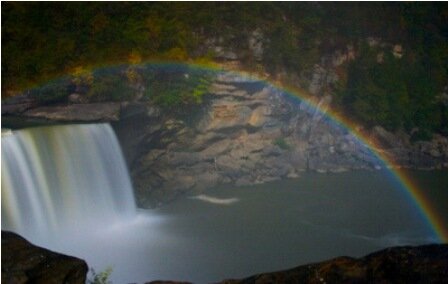These following facts about weather will probably show you what nature is really like. Nature, as you know, can be changed drastically due to the change of weather. Therefore, it’s really important for us to know more about weather. Weather is the state of the atmosphere, to the degree that it is hot or cold, wet or dry, calm or stormy, clear or cloudy. It generally refers to day-to-day temperature and precipitation activity, whereas climate is the term for the average atmospheric conditions over longer periods of time. To get to know more about weather, here are some other facts about weather you may probably want to know.
Facts about weather 1: Moon Bows
A rainbow is caused by the Sun shining on moisture droplets, most commonly in a post-rain atmosphere. A moon bow is much rarer, only seen at night when the moon is low and full to almost full. One popular place to see moon bows is at Cumberland Falls in Kentucky.
Facts about weather 2: Mirages
Mirages occur when light is refracted to produce an image of an object or the sky where it is not. It is most commonly seen on hot surfaces, such as the pavement or a desert.
Facts about weather 3: Haloes
Like rainbows, haloes are formed around the Sun due to moisture (in this case ice crystals) being refracted from the Sun’s rays in the upper atmosphere. Sometimes two or more areas of the circle or arcs surrounding the Sun will be brighter, forming what are called Sun Dogs. Haloes can also form around the Moon, and occasionally around the brighter stars and planets like Venus.
Facts about weather 4: Belt of Venus
The belt of Venus is a phenomenon that occurs during dusty evenings when a band of pinkish or brownish sky will appear between the sky and the horizon.
Facts about weather 5: Noctilucent Clouds
Noctilucent clouds are atmospherically high clouds that refract light at dusk when the Sun has already set, illuminating the sky with no seeming light source.
Facts about weather 6: Aurora Borealis
Also known in the southern hemisphere as the Aurora Australis, the Aurora Borealis are charged particles from the Sun that have reached the Earth’s upper atmosphere and become excited. They are more typically seen closer to the poles and during the equinoxes of the year.
Facts about weather 7: Colored Moon
Due to different atmospheric issues, the moon will occasionally appear tinged with a color, such as blue, orange, or red. Excess smoke, dust, and eclipses can cause the moon to change color.
Facts about weather 8: St. Elmo’s Fire
This weather phenomenon is luminous plasma that appears like fire on objects, such as the masts of ships or lightning rods, in an area that is electrically charged during a thunderstorm. This occurrence was named the after St Elmo, the patron saint of sailors.
Facts about weather 9: Virga
Virga is when ice crystals in clouds fall, but evaporate before hitting the ground. They appear as trails from clouds reaching for the surface, sometimes giving the cloud a jellyfish-like appearance.
Facts about weather 10: Fire Rainbow
A fire rainbow is an extremely rare phenomenon that occurs only when the sun is high allowing its light to pass through high-altitude cirrus clouds with a high content of ice crystals.
Those following facts about weather should probably broaden your knowledge. It will open your mind up about what the weather is really like. Hope this weather facts would be really interesting and useful for you to read.










 www.PortlandPayday.Loans
www.PortlandPayday.Loans